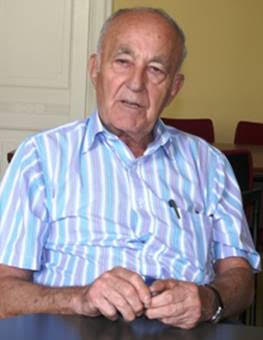
THE VOICE OF INTERNATIONAL LITHUANIA
|
VilNews has its own Google archive! Type a word in the above search box to find any article.
You can also follow us on Facebook. We have two different pages. Click to open and join.
|
Author Archive
- Posted by - (0) Comment
The Lithuanian World Community (Lithuanian: Pasaulio lietuvių bendruomenė or PLB) is a non-governmental and non-profit organization established in 1949 that unifies Lithuanian communities abroad. The Constitution of the Lithuanian World Community declares that it consists of all Lithuanians living abroad. The Community is active in 36 countries, including representation in Lithuania.
On February 7, 1932 a fund to support Lithuanians in foreign countries was established in Lithuania, making one of the first attempts to maintain closer ties between the Lithuanian diaspora and Lithuania. Three years later the first Lithuanian World Congress was held in Kaunas, which established the Lithuanian World Union. The mission of the Lithuanian World Union, also drafted during the Congress, called for a cultural and economic union of Lithuanians in different countries. However World War II and Lithuania's occupation interrupted the work. Many educated Lithuanians fled to western countries, hoping to avoid approaching Soviet repressions. In 1946 the Lithuanian community in Germany established the Lithuanian Deportees Community, which aimed at consolidating and helping Lithuanians in Germany. In 1949 Lithuania's Supreme Liberation Committee (Lithuanian: Vyriausiasis Lietuvos išlaisvinimo komitetas or VLIKas), established in 1943, delivered the Lithuanian Charter and the Constitutions of the Lithuanian World Community, which solemnly pledged to support and unite all Lithuanians outside Lithuania's borders and promote Lithuanian culture and language abroad. The Lithuanian Charter also proclaimed:
· a nation is a natural community of people;
· a human has birthright to freely profess and promote his nationality;
· a Lithuanian remains a Lithuanian everywhere and always;
· his parents maintained the Lithuanian national consciousness; a Lithuanian relays it to the generations yet unborn, to remain alive;
· a language is the strongest tie to the national community;
· the Lithuanian language is the most precious national honour for a Lithuanian national solidarity is the highest national virtue.
- Bookmark :
- Digg
- del.icio.us
- Stumbleupon
- Redit it
- Posted by - (0) Comment
The Lithuanian World Community (Lithuanian: Pasaulio lietuvių bendruomenė or PLB) is a non-governmental and non-profit organization established in 1949 that unifies Lithuanian communities abroad. The Constitution of the Lithuanian World Community declares that it consists of all Lithuanians living abroad. The Community is active in 36 countries, including representation in Lithuania.
On February 7, 1932 a fund to support Lithuanians in foreign countries was established in Lithuania, making one of the first attempts to maintain closer ties between the Lithuanian diaspora and Lithuania. Three years later the first Lithuanian World Congress was held in Kaunas, which established the Lithuanian World Union. The mission of the Lithuanian World Union, also drafted during the Congress, called for a cultural and economic union of Lithuanians in different countries. However World War II and Lithuania's occupation interrupted the work. Many educated Lithuanians fled to western countries, hoping to avoid approaching Soviet repressions. In 1946 the Lithuanian community in Germany established the Lithuanian Deportees Community, which aimed at consolidating and helping Lithuanians in Germany. In 1949 Lithuania's Supreme Liberation Committee (Lithuanian: Vyriausiasis Lietuvos išlaisvinimo komitetas or VLIKas), established in 1943, delivered the Lithuanian Charter and the Constitutions of the Lithuanian World Community, which solemnly pledged to support and unite all Lithuanians outside Lithuania's borders and promote Lithuanian culture and language abroad. The Lithuanian Charter also proclaimed:
- a nation is a natural community of people;
- a human has birthright to freely profess and promote his nationality;
- a Lithuanian remains a Lithuanian everywhere and always;
- his parents maintained the Lithuanian national consciousness; a Lithuanian relays it to the generations yet unborn, to remain alive;
- a language is the strongest tie to the national community;
- the Lithuanian language is the most precious national honour for a Lithuanian;
- national solidarity is the highest national virtue.
In the 1950s many Lithuanians from Germany moved to the United States, Canada, Australia, South America and other countries, where they established new branches of the Lithuanian Community. 1955 saw elections to the first Lithuanian Community Council in the U.S., which allowed better coordination among the different Lithuanian groups. In 1960 Lithuanians in the U.S., among them future President of Lithuania Valdas Adamkus, collected about 40,000 signatures and petitioned the United States Government to intervene in the ongoing deportations of Lithuanians to Siberia conducted by the Soviets.
In August 2006, President Valdas Adamkus attended the opening ceremony of the World Lithuanian Community's 12th Seimas. Adamkus proposed new goals for the Community as it was facing new challenges which had to be accepted and dealt with because a new wave of Lithuanians had left their homeland since the declaration of independence in 1990.
Structure
The Lithuanian World Community consists of local Lithuanian Communities around the world, currently numbering 36. The highest body is the Seimas of the Lithuanian World Community. Its main goal is to periodically adopt and review the Community's strategy and program. Each country sends at least one representative to the Seimas, which gathers every three years (1958-1997 it gathered every five years). The Seimas also elects the Community Council to deal with day-to-day issues. As of 2009, thirteen Community Councils had been elected:
- 1958 in New York City. Elected Chairmen Jonas Matulionis and Dr. Juozas Sungaila
- 1963 in Toronto (Canada). Elected Chairman Bachunas-Bačiūnas
- 1968 in New York (USA). Chairman Juozas J. Bachunas-Bačiūnas, after his death Stasys Barzdukas
- 1973 in Washington D.C. (USA). Chairman Bronius Nainys
- 1978 in Toronto (Canada). Chairman Vytautas Kamantas
- 1983 in Chicago (USA). Chairman Vytautas Kamantas
- 1988 in Toronto (Canada). Chairman Dr. Vytautas Bieliauskas
- 1992 in Lemont, Illinois (USA). Chairman Bronius Nainys
- 1997 in Vilnius. Chairman Vytautas Kamantas
- 2000 in Vilnius. Chairman Vytautas Kamantas
- 2003 in Vilnius. Chairman Gabrielius Žemkalnis
- 2006 in Vilnius. Chairwoman Regina Narušienė
- 2009 in Vilnius. Chairwoman Regina Narušienė
- 2012 in Vilnius. New chairperson to be elected.
Source: http://en.wikipedia.org/wiki/Lithuanian_World_Community
- Bookmark :
- Digg
- del.icio.us
- Stumbleupon
- Redit it
- Posted by - (0) Comment
Chinese tourists have discovered Lithuania!
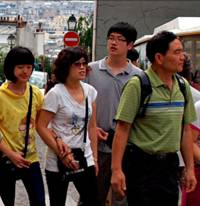
In tiny Lithuania (which is not exactly Europe’s #1 tourist destination), there are droves of Chinese tourists running around the city.
- Bookmark :
- Digg
- del.icio.us
- Stumbleupon
- Redit it
Record-breaking first half of the year at Vilnius Airport: June – the best in history
- Posted by - (0) Comment
![]()
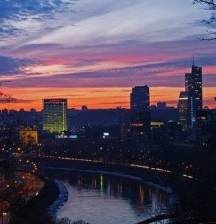
The passenger traffic at Vilnius International Airport (VIA) has shown a steady upward trend since the previous year, and the result of June this year was the best throughout all years of the airport’s operation.
In June 2012, the airport handled 228.6 thousand passengers, which surpassed the result of June 2011 by 23%. Until now, the best monthly result was achieved in August 2008, when the number of passengers soared to 224.6 thousand. 2,775 flights were operated in the first summer month, showing a 7% growth.
The growth in regular flights accounted for 25%, while charter flights witnessed a 15% increase. The most popular June destinations were London, Frankfurt, Riga, Antalya, Copenhagen and Moscow.
971 thousand passengers were handled in six months this year, showing a 36% growth in passenger numbers compared to the same period in 2011.
“The successful results of the first half of the year reached the peak on 15 June, when Vilnius Airport beat the record of the passengers handled in one day: 4,498 passengers departed from Vilnius Airport and 4,530 passengers arrived at Vilnius Airport, totalling 9,028 passengers handled by the airport,” Tomas Vaišvila, VIA Managing Director, commented the results. “Most passengers arrived from Riga – 371, while the number of departing passengers was the highest on London route – 490. A large part of passengers – 1834 – travelled to holiday destinations – Sicily, Cyprus, Turkey, and Greece.”
Until now, the highest number of passengers handled in one day was 8,682 passengers on 17 August 2008.
In 2007 Vilnius Airport handled 1,717 million passengers, 2,048 million in 2008, 1,308 million in 2009, 1,373 million in 2010, and 1,715 million in 2011. It is expected to reach a 25% growth in passenger traffic in 2012. 20 airlines operate regular flights from Vilnius Airport on as many as 39 direct routes.
- Bookmark :
- Digg
- del.icio.us
- Stumbleupon
- Redit it
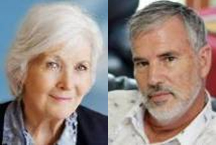
By Aage Myhre, editor-in-chief
aage.myhre@VilNews.com
A new concept for senior apartments, with focus on warmth, dignity and joy. Custom apartments around an outdoor, enclosed patio - plus a large, common 'lobby' for food, reading, music, good talks, therapy, training and more.
Some friends of mine have a large estate just north of Vilnius centre, about 20 minutes drive from the old town and less than five minutes from the Le Meridien Hotel, with its beautiful pool, spa complex, and a great new 18-hole golf course.
The plan they have under consideration right now is to build an elegant senior complex on the site, for potential buyers both in this country and from abroad.
Quality and service will be very high, still at prices one can hardly dream of the United States, Western Europe or Australia.
The planned complex will consist of around 50 apartments and a large public centre-building that can best be compared with an international hotel lobby.
In this 'lobby' one will be met by colorful life as soon as one enters. Dining room, restaurant, cafe, bar, library, piano music, as well as rooms for health, therapy, manicure and sports is that which meets the residents which shall dwell in this totally extraordinary senior complex.
Seniors who buy an apartment here, will in other words not just get a nice place to live, but a total package of food, drinks, activities, care and necessary health care measures in accordance with their own state. Nurses will always be present in the center, and doctors will come here on short notice.
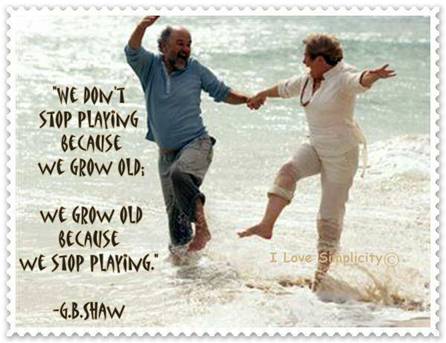
- Bookmark :
- Digg
- del.icio.us
- Stumbleupon
- Redit it

By Aage Myhre, editor-in-chief
aage.myhre@VilNews.com
A new concept for senior apartments, with focus on warmth, dignity and joy. Custom apartments around an outdoor, enclosed patio - plus a large, common 'lobby' for food, reading, music, good talks, therapy, training and more.
Some friends of mine have a large estate just north of Vilnius centre, about 20 minutes drive from the old town and less than five minutes from the Le Meridien Hotel, with its beautiful pool, spa complex, and a great new 18-hole golf course.
The plan they have under consideration right now is to build an elegant senior complex on the site, for potential buyers both in this country and from abroad.
Quality and service will be very high, still at prices one can hardly dream of the United States, Western Europe or Australia.
The planned complex will consist of around 50 apartments and a large public centre-building that can best be compared with an international hotel lobby.
In this 'lobby' one will be met by colorful life as soon as one enters. Dining room, restaurant, cafe, bar, library, piano music, as well as rooms for health, therapy, manicure and sports is that which meets the residents which shall dwell in this totally extraordinary senior complex.
Seniors who buy an apartment here, will in other words not just get a nice place to live, but a total package of food, drinks, activities, care and necessary health care measures in accordance with their own state. Nurses will always be present in the center, and doctors will come here on short notice.

Homes, institutions and facilities for the elderly are too often characterized by the fact that they are not very inspiring and warm. This concept goes in the opposite direction. Here the goal is to develop and build senior housing that helps to improve living, more activity, pleasure, warm and socializing with others.
The plans show a building with two wings perpendicular to each other. Each on two floors, with apartments on both sides of a wide corridor. The current example shows a building with 50 apartments in four sizes, about 45m2, 55m2, 70m2 and 80m2, plus a relatively large 'glass house' in the corner between the two residential wings. The ‘glass souse’ is the meeting point for joint activities, with dining room, café, bar, room for exercise, dance, music, body care, hair salon, a library and a small convenience store.
The outdoor area in the angle between the building wings planned as a green, beautiful atrium bounded by building wings and a garage number which is also built at an angle.
The apartments
All apartments are bright and cozy; with living room, bedroom, kitchen, large bathroom and spacious balconies. It is also done something as unusual as to have two balcony doors (one sliding door, one to open the plain), from the living room as well as from the bedroom, even for the smallest of the apartments. The idea is that fresh Lithuanian air, even on a winter day, and the ability to go out and experience the refreshing wind, rain, snow or sun, is life-giving and inspiring.
Apartments and common areas are all accessible for disabled people, including wheelchairs.
All apartments of assumed equipped with the latest in 'welfare technology' that make life easier and safer for people with various forms of assistance potentially needed from time to time.




Bright
and cozy apartments with living room, bedroom, kitchen, large bathroom and
spacious balconies.
The ’Glass House’
The corner between the residential wings is a prism-like oasis of a glass building that is open up between the floors. To gain an understanding of the impression one would get while coming in here, one should envision a large, bright, attractive lobby of an international hotel. As an open landscape with large green plants, deep chairs, café, newspapers, books, music, happy people in motion, some of the same feeling of exclusivity that you get when you enter a traditional hotel. Ceilings and walls are mainly of glass. The green and welcoming main entrance / porch has been added to the outer corner of the glass house. The inner corner of the ‘Glass House’ opens onto a wonderful green oasis, where a sculpture fountain forms the centre of a symmetrical patio with lots of green garden plants.

The
circular reception is the central point in the 'Glass House'.
KITCHEN AND DINING ROOM
In the ‘Glass House’, closest to the residential wings, are respectively the kitchen and the gym located, both of about 70 m2, with high ceilings (about 4 m) and space for ventilation and engineering controls at the top of the rooms. The kitchen has a separate entrance and door for deliveries from abroad. Vans can drive right up.
Beside the kitchen is the dining room of about 70 m2, with direct access from the kitchen. The dining hall's walls to the lobby area are made flexible with regard to how much they would be opened or closed, so that it can also be made part of the large, open lobby landscape (e.g. for major events). The dining room is furnished with round tables, which will contribute to the dignity of the dining. It is also easier to communicate at a round table. Square dining tables seem slightly canteen-or institution-like with reduced opportunities for communication within small groups.
The food offered will be tempting, modern and of good quality, both nutrition and taste-wise.

The
dining room is planned furnished with round tables, which one believes will
contribute to dignity
and
better opportunities for communication over a tasty meal.


The food
offered will be tempting, modern and of good quality
both
nutrition and taste-wise.
THE BAR
A bar in the classic style with kitchenette, etc., is intended located at the other kitchen wall, towards and as a part of the open lobby landscape.

A good,
classic bar is a natural part of the 'Glass House'.
THE LOBBY CAFE
Opposite the bar, towards the centre of the lobby's landscape, a green and attractive café with French café tables is located. This is probably the most attractive place to sit for a little bit of gossip… Witha glass of wine served from the bar.


The
French lobby café is the place for a cheese board with a good glass of wine
or a
café au lait served from the bar.
THE LOUNGE
The lounge is located on the other side of the 'corridor' in the centre of the lobby. Here are the deep chairs, a good place to sit with a whisky or a glass of cognac to play cards, chess, or to discuss. A black grand piano is for the use of residents who may know how to play, and also fro hired pianists from time to time...
Games, newspapers and silent fonts are in a fit right in 'corridor' between the elevator and reception.


The
black grand piano in the lounge is to the enjoyment of residents who can play,
and for
pianists hired from time to time ...
THE GLASS ELEVATOR
In the 'corridor behind the reception and the newspaper showcase, there is a glass elevator that goes up to the second floor, to a bridge that connects the wings on the second floor. The glass elevator will also indicate that you are in a luxury hotel. Behind the bridge there is also an open staircase up to 2 floor bridge.

A glass
elevator goes up to the second floor, to a bridge that connects
the
second-floor apartment in the two residential wings.
LIBRARY AND TEA CORNER
At the back of the lobby there is a library and tea corner, right next to the glass wall overlooking the atrium, the green grounds in the angle between the wings.
The library and the tea corner is meant for slightly slower pace, with a good book and a cup of afternoon tea while reading. Voice level here is lower, but the view out onto the green outdoors better.

The
library and tea corner is meant for slightly slower pace, with a good book
and a
cup of afternoon tea while reading.
CONVENIENCE STORE
Between the dining room and the main entrance, there will be a convenience store, mainly with glass walls. The store may well have entrance from both the lobby and from outside (external customers). A limited selection of groceries, beer / soft drinks, cigarettes, reading material, etc. should be provided. A 7-Eleven concept.

The tiny
grocery store may well have entrance from both the lobby and from
outside (external customers). A limited selection of groceries, beer / soft
drinks, smoking, reading material, etc. should be provided.
THE ’LOBBY’ WILL BE FLEXIBLE AND MULTI-FUNCTIONAL


The
lobby and the dining room may also well be used for many other activities.
DEPARTMENT OF HEALTH AND BODY CARE
To the right, when you have entered the main entrance, you will find a small room that focuses on health. A general practitioner and other health personnel will be here from time to time to offer simple examinations and consultations. The room also contains equipment and remedies for first aid, etc.
The next room is the division for body care. Here you can cut hair and nails. Hands and feet will be cared for, and in a separate enclosure, you can enjoy body massage and other forms of body therapy. This is also the location of various other therapies, all with a focus on the residents' bodies and wellbeing.

The
hairdresser has an important job to do for both men and women.


Body
care in many different forms contributes to the feeling of well being.
THE FITNESS CENTER
The fitness center, farthest from the entrance, is approximately 70 m2, with a ceiling height of about four meters. Here, various forms of physical activity take place during the day.


Outdoor area - atrium
The outdoor area is one green and relatively closed atrium, limited by the building's two wings and a garage row which is also built as an angle. People from outside cannot see in here. That gives a good sense of security and wellbeing.
The atrium garden is green and symmetrical. In the centre there is a fountain, with water gushing up from a classical sculpture, with a water mirror around. The benches in the circle outside the fountain are ready for leisurely reading newspapers, and more.
The area around the fountain is also suitable as a party space for grilling, outdoor café etc in the summer.
The green square textures surrounded by green hedge-like shrubs year-round with height up to one meter.
Symmetry is the dignity architecture. The sound and sight of water in motion has a good, relaxing effect. Here in the garden one can enjoy and experience the refreshing, life-giving weather almost all year round!



The
atrium centerpiece, around the fountain, is suitable as a party space for
grilling,
outdoor
café etc in the summer.

In the
atrium outer edges, along the main building's exterior walls, one can walk and
feel the
grass
wedge between the toes. The feeling is amazing!
The pavilion and the garages



The
pavilion between the garage wings is suitable for handicrafts, music and more.
In the corner, between the two rows of garages, we see another building with a glass roof, often used as a music pavilion and / or a room for billiards, table tennis, etc. Also various handicrafts can very well take place here in the pavilion. The ends of each wing of the garage are well suited sheds and storages.
The following sketch shows the proposed project for senior housing constructed in accordance with the above ideas and policies.
The project consists of two wings of apartments measuring approx 45m2, 55m2, 70m2 and 80 m2, plus a 'glass house' where dining & wining, activities, etc. will take place.
AREA PLAN

The buildings will be built around a rectangular green and closed atrium, limited by the building's two wings and a garage row which is also built as an angle. People from outside cannot see in here. That gives a good sense of security and wellbeing.
The atrium garden is green and symmetrical. In the centre there is a fountain, with water gushing up from a classical sculpture, with a water mirror around.
- Bookmark :
- Digg
- del.icio.us
- Stumbleupon
- Redit it
- Posted by - (0) Comment
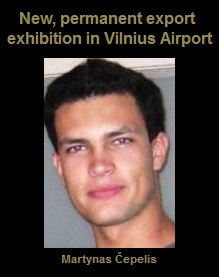
This September a new permanent exhibition for business – EXPO Center of Lithuanian Enterprises – will open its doors to passengers at Vilnius International Airport (VIA), which will be available to every departing passenger after completing aviation security screening procedures.
Situated next to the Business Lounge of Vilnius Airport, EXPO Center will provide Lithuanian enterprises with an opportunity to present their activities, thus enhancing their recognition in Lithuania and presenting themselves to foreign guests.¨
Having thoroughly acquainted with a good or service on display, professional consultants working at EXPO Center will seek potential partners and useful contacts for the enterprises showcasing themselves in the exhibition. It is the first service to business of this type in the country.
“To find foreign partners, Lithuanian entrepreneurs often choose a traditional way – to attend exhibitions abroad. Our idea is to open an exhibition at home, at Vilnius Airport, witnessing a great number of departing and arriving Lithuanian and foreign entrepreneurs. What is more, the foreigners who have already visited Lithuania and got familiar with the country and culture are more prone to develop their business relations with local business representatives. The EXPO Center will contribute to a more active entrance of Lithuanian enterprises to new export markets and ensure the spread of contacts in the best interest of businesses,” says Martynas Čepelis, Director of EXPO Center.
The passenger traffic shows a steady upward trend at Vilnius Airport. It is expected to handle 2.15 million passengers this year and 2.5 million passengers in 2013. According to the data available at the airport, as many as 46 percent of passengers travel on business purposes.
“We believe that the EXPO Center will not only be of great use and interest to entrepreneurs but also to every airport passenger. The exhibition will present Lithuania as a country providing top-quality products and high added-value services and will give an opportunity to foreign entrepreneurs to discover new business ideas and to establish useful contacts,” says Simonas Bartkus, Director of Commerce Department at Vilnius International Airport.
Some 70 companies from varying Lithuanian businesses and industrial sectors will have a chance to display their goods and services in the EXPO Center exposition at a time. It is estimated that 10-15 thousand people could visit it in a month.
- Bookmark :
- Digg
- del.icio.us
- Stumbleupon
- Redit it
- Posted by - (0) Comment
TOPIC 1:
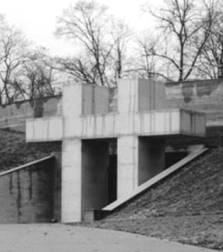
We will be soon be presenting some stories about the victims that were executed in the NKGB–MGB internal prison here in Vilnius between 28 September 1944 and 16 April 1947, buried in secret mass graves in the territory of the Tuskulėnai Manor (picture).
TOPIC 2:

TOPIC 3:
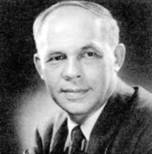
TOPIC 4:
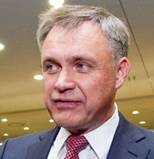
says the new President of Lithuanian Industrialists' Confederation, Robertas Dargis, about the government’s handling of the financial crisis in Lithuania.
TOPIC 5:
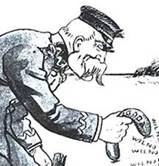
TOPIC 6:

TOPIC 7:
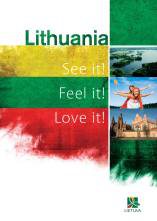
COME HOME, YOUR COUNTRY NEEDS YOU
- Bookmark :
- Digg
- del.icio.us
- Stumbleupon
- Redit it
- Posted by - (1) Comment
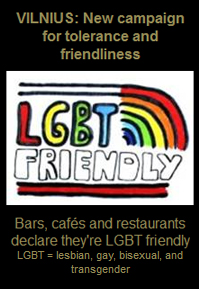
Absolutely awesome little campaign bringing friendliness to Vilnius

Mark SPLINTER

LGBT friendly Vilnius
Vilnius' spots that aren't afraid to declare they're LGBT friendly
By: LGBT friendly Vilnius

Grant Gochin Is it safe for people to be out there?

Mark SPLINTER it's safe in the tourist areas, the sticker is about celebrating and advertising the friendliness that already exists. But even in the tourist areas a gay kiss causes a scandal and if some knucklehead sees it then you might get into some trouble. also there are some horrible violent comments on the internet, but that's inevitable.

Rimas Pileika What is? Store, bar?

Hannah Shipman Something positive for tolerance.

Mark SPLINTER so far, restaurants and bars are participating. Latest news - the council have invoked a law - You have to put the sticker on the inside of the door not the outside. This law doesn't seem to be enforced very strictly against other door stickers. Anyway they will just change the stickers to inside and that's all.

Hannah Shipman Cafes and restaurants are displaying stickers to indicate that they are LGBT (lesbian, gay, bisexual and transgender) friendly. It is refreshing to hear something positive on this subject rather than the tirades of Petras Gražulis.

Mark SPLINTER
https://www.facebook.com/lgbtfriendlyvilnius

LGBT friendly Vilnius
LGBT FRIENDLY VILNIUS - spontaneous social cause aimed to make Vilnius a better place. ; ]

Kenny Kaunas Sweet! DJs and a beer garden, perhaps?

Grant Gochin It's a pity that people have to put up signs saying they are NOT homophobes.
- Bookmark :
- Digg
- del.icio.us
- Stumbleupon
- Redit it
- Posted by - (0) Comment

Absolutely awesome little campaign bringing friendliness to Vilnius

Mark SPLINTER

LGBT friendly Vilnius
Vilnius' spots that aren't afraid to declare they're LGBT friendly
By: LGBT friendly Vilnius

Grant Gochin Is it safe for people to be out there?

Mark SPLINTER it's safe in the tourist areas, the sticker is about celebrating and advertising the friendliness that already exists. But even in the tourist areas a gay kiss causes a scandal and if some knucklehead sees it then you might get into some trouble. also there are some horrible violent comments on the internet, but that's inevitable.

Rimas Pileika What is? Store, bar?

Hannah Shipman Something positive for tolerance.

Mark SPLINTER so far, restaurants and bars are participating. Latest news - the council have invoked a law - You have to put the sticker on the inside of the door not the outside. This law doesn't seem to be enforced very strictly against other door stickers. Anyway they will just change the stickers to inside and that's all.

Hannah Shipman Cafes and restaurants are displaying stickers to indicate that they are LGBT (lesbian, gay, bisexual and transgender) friendly. It is refreshing to hear something positive on this subject rather than the tirades of Petras Gražulis.

Mark SPLINTER
https://www.facebook.com/lgbtfriendlyvilnius

LGBT friendly Vilnius
LGBT FRIENDLY VILNIUS - spontaneous social cause aimed to make Vilnius a better place. ; ]

Kenny Kaunas Sweet! DJs and a beer garden, perhaps?

Grant Gochin It's a pity that people have to put up signs saying they are NOT homophobes.
- Bookmark :
- Digg
- del.icio.us
- Stumbleupon
- Redit it
- Posted by - (0) Comment
NEW VIDEOS:
Cold War eyewitnesses
come forward
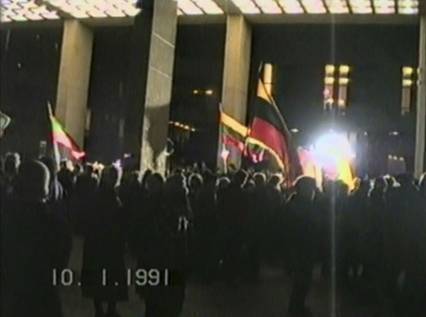
Eyewitnesses at the Lithuanian Parliament in Janaury 1991.
Photo by Albinas Kentra.
The main objective of the new BALTIC INITIATIVE and NETWORK is to strengthen mutual understanding between the countries around the Baltic Sea through an exchange of information on the Cold War period. The idea is that history should be told from the historically valuable sites at which events took place. Relevant sites include, for example: military installations and towns, prisons and prison camps, partisan bunkers, execution sites, secret police offices, sculptures and architecture or simple squares or buildings where memorable events took place.
While this information is normally handled by museums, they believe that recent history can be told effectively from these sites from the prospective of – it happened here - with the significant help of eye witnesses.
- Bookmark :
- Digg
- del.icio.us
- Stumbleupon
- Redit it
- Posted by - (1) Comment
NEW VIDEOS:
Cold War eyewitnesses
come forward
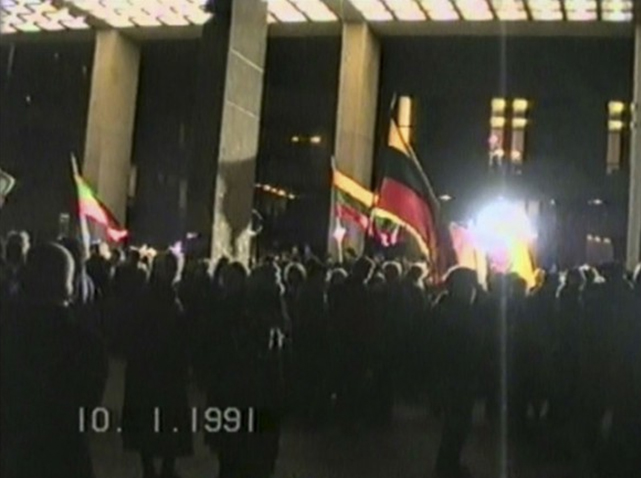
Eyewitnesses at the Lithuanian Parliament in Janaury 1991.
Photo by Albinas Kentra.
The main objective of the new BALTIC INITIATIVE and NETWORK is to strengthen mutual understanding between the countries around the Baltic Sea through an exchange of information on the Cold War period. The idea is that history should be told from the historically valuable sites at which events took place. Relevant sites include, for example: military installations and towns, prisons and prison camps, partisan bunkers, execution sites, secret police offices, sculptures and architecture or simple squares or buildings where memorable events took place.
While this information is normally handled by museums, they believe that recent history can be told effectively from these sites from the prospective of – it happened here - with the significant help of eye witnesses. Their main task up until now has been to initiate and participate in concrete, international activities and co-operation projects that can improve this mutual understanding. Their main activity thus far has been to support and participate in international cooperation projects that strengthen these activities.
“LISTEN TO THE EYE WITNESSES”
A part of the Baltic Initiative and Network’s sharing of information process is to publish videos based on eyewitness accounts. One special feature of recent history is that many eye witnesses are still alive and can provide important information on the history of events and on valuable historical sites. These are people who were present at the sites as prisoners, partisans, participants in demonstrations, dissidents, military staff etc.
Dear readers, we would like to share with you some of their very informative videos about Lithuania during the Soviet Russian occupation. All of these videos were produced by Algis Kuzmickas of Lithuania in 2011 for the Baltic Initiative and Network.
Jonas Kadzionis - The Partisan in the Forest.
Restored and reconstructed partisan Bunkers, Lithuania.
Jonas Kadzionis was a former partisan, GULAG prisoner and deportee. He has reconstructed the former underground bunker in which he hid throughout his partisan life.
Juozas Aleksiejunas - Prisoner in the KGB prison
The KGB prison
The Museum of Genocide Victims, Aukų gatvė. 2A, Vilnius.
Juozas Aleksiejunas is a former partisan who was arrested by the Soviet occupation forces in 1945. He was interrogated in the KGB prison in Vilnius.
Tomas Sernas - Survivor of the Border Massacre.
The Medininkai Memorial. Lithuania
At 4 o’clock in the morning on July 31, 1991, eight Lithuanian policemen and customs officers were executed in Medininkai, on the Lithuanian border with Belarus. They were killed by shots to the back of the head. The executers were Soviet OMON forces from Riga (Special armed police units). One of the border officers, Tomas Sernas, miraculously survived, albeit disabled. He had been working as a biologist in Kaunas Zoo at the time and felt that he had to do something for his newly independent country so he volunteered as a customs officer.
Vytautis Andziulis - Underground Printer
The secret Printing House. Kaunas, Lithuania
The secret “ab” Printing House was set up in 1979 by Vytautis Andziulis, a professional printer, and Juozas Bacevičius. The printing activities took place in the home of the Andziulis family, north of Kaunas. The printing house produced 138,000 copies of 23 different books, covering Lithuanian history, religion, philosophy and poetry. The printing house was never found by the secret police although there were some close calls.
Albinas Kentra - The camera as a weapon
The Sites of the Freedom Demonstrations. Vilnius. Lithuania
Albinas Kentra was a former partisan, GULAG prisoner and deportee. He is mostly known for his unique video footage of the bloody January events of 1991 in Vilnius when hundreds of thousands of Lithuanian people took to the streets in their newly independent country to protect key institutions from the Soviet military forces.
Gintautas Kazlauskas - Deported twice to Siberia.
Druskininkai Museum of Resistance and Deportations.
Gintautas Kazlauskas was deported to Siberia with his mother and little sister. His sister died because of the hard living conditions. Gintautas and his mother fled back to Lithuania but were arrested and deported once more. Following Lithuania’s independence, he returned to his fatherland after 42 years in exile. He is the founder and current director of and guide at the Druskininkai Museum of Resistance and Deportations.
Irene Spakauskiene - Deported children of the ice
Reconstructed Siberian Yurt. Rumsiskes, Lithuania
Irene Spakauskiene was deported to the Laptev Sea region with her family when she was a little girl. It was a region with permafrost and a temperature of up to minus 50 degrees. The stay was marked by cold, hunger, disease and death, which hit the old and the children first and foremost. The deportees lived in peat huts, so-called yurts. The windows were made of pieces of ice and the inside temperature never rose above freezing.
We would highly recommend you visit their web site http://coldwarsites.net/
It has a wealth of information about not only Lithuania and its Baltic neighbors Estonia and Latvia but also Denmark, Germany, Finland, Iceland, Norway, Poland, Russia and Sweden. This is a very informative site about a very worthwhile project.
Su pagarbe
Vincas Karnila
Associate editor
- Bookmark :
- Digg
- del.icio.us
- Stumbleupon
- Redit it
All week we have been having scattered thunderstorms in Lithuania. Thursday 12 July we had a storm come through late afternoon that dropped “a little” rain on Old Town.
Rather than tell you about it I thought it would be better to show you what Pilies Gatve looked like after this “little shower”.
For a rough translation of the title and comment:
Das ist lietus in Vilnius / 2012 07 12 pilies gatves upe (This seems to be half German and Half Lithuanian) - This is rain in Vilnius 12 July 2012. Pilies Gatve river
2012 liepos 12 pilies gatve plauke kedes ir stalai. Katinu nebuvo. O pati liutis buvo idomi. Pasirodo tos kedes ir stalai buvo cili picos nuosavybe. Ha! – 12 July 2012 on Pilies Gatvė swam chairs and tables. Cats were not there. And (the) rain was interesting. It appears that (the) chairs and tables were (the) property of Čili Pizzeria. Ha!
- Bookmark :
- Digg
- del.icio.us
- Stumbleupon
- Redit it
All week we have been having scattered thunderstorms in Lithuania. Thursday 12 July we had a storm come through late afternoon that dropped “a little” rain on Old Town.
Rather than tell you about it I thought it would be better to show you what Pilies Gatve looked like after this “little shower”.
For a rough translation of the title and comment:
Das ist lietus in Vilnius / 2012 07 12 pilies gatves upe (This seems to be half German and Half Lithuanian) - This is rain in Vilnius 12 July 2012. Pilies Gatve river
2012 liepos 12 pilies gatve plauke kedes ir stalai. Katinu nebuvo. O pati liutis buvo idomi. Pasirodo tos kedes ir stalai buvo cili picos nuosavybe. Ha! – 12 July 2012 on Pilies Gatvė swam chairs and tables. Cats were not there. And (the) rain was interesting. It appears that (the) chairs and tables were (the) property of Čili Pizzeria. Ha!
- Bookmark :
- Digg
- del.icio.us
- Stumbleupon
- Redit it
- Posted by - (0) Comment
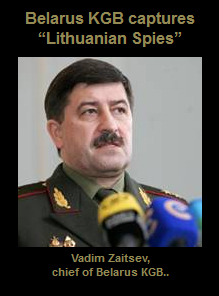
The alleged spies face
7 to 15 years in prison.
Authorities in Belarus say they have arrested an undisclosed number of people accused of spying on behalf of Lithuania.
The ex-Soviet nation's top security agency, which is still known as the KGB, said Thursday that the arrested individuals are Belarussian nationals who have already confessed to trying to obtain defense and security information about Belarus and Russia.
Lithuanian foreign ministry spokesman Mindaugas Lasas was quoted by the RIA Novosti agency as saying that the allegations were "not true."
Since 1994, Belarus has been ruled by authoritarian President Alexander Lukashenko. Over the years, his government has arrested and imprisoned dozens of opposition activists, government critics and journalists.
Belarus has often accused Lithuania, which is part of the European Union, of supporting Lukashenko's opponents.
“All those arrested are citizens of Belarus,” Artur Strekh, a deputy head of the KGB’s information and public relations department, said
- Bookmark :
- Digg
- del.icio.us
- Stumbleupon
- Redit it
Visit Žagarė, northern Lithuania, this weekend
- Posted by - (0) Comment
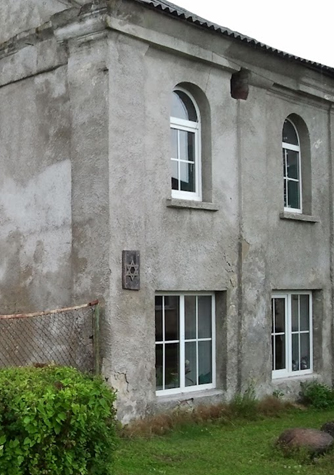
Former Žagarė synagogue.
INVITATION TO A VERY SPECIAL EVENT IN ŽAGARĖ
Under the initiative and leadership of a Lithuanian activist Valdas Balčiūnas, A MEMORIAL PLAQUE TO COMMEMORATE THE ZAGARE JEWISH COMMUNITY will be unveiled. The ceremony coincides and may be considered to be taking place in the context of ZAGARE CHERRY FESTIVAL which will be held in July 12-15. The plaque will be in English, Lithuanian, and Yiddish. Here is what the English version will say:
The festival begins on July 12, 2012. Here are some highlights of Jewish interest:
• Dedication of the memorial plaque -- Friday July 13 at 1600 in the Zagare Town Square
• "From the History of the Shtetl"– a presentation, exhibition, and concert organized by the Joniskis Municipality Museum -- Friday July 13 at 1700 at the Zagare Culture Centre
• Baltic senior football (soccer) competition including the Makabi team from Vilnius – Saturday July 14 at 1300.
Please let us know if you are planning to attend. We look forward to seeing a strong representation of descendants of the former Jewish community of Zagare. After the official events there will be a FRIDAY EVENING GATHERING AND 'KABBALAT SHABBAT' FOR VISITORS. If you wish to be invited to this please let us know.
For more information please contact any of the following:
UK - Joy Hall (joy@joymaynard.myzen.co.uk)
LITHUANIA -Valdas Balciunas (valdas@me.com)
U.S. - Cliff Marks (c.v.marks@att.net)
ISRAEL - Sara Manobla (manobla@netvision.net.il)
- Bookmark :
- Digg
- del.icio.us
- Stumbleupon
- Redit it
VilNews e-magazine is published in Vilnius, Lithuania. Editor-in-Chief: Mr. Aage Myhre. Inquires to the editors: editor@VilNews.com.
Code of Ethics: See Section 2 – about VilNews. VilNews is not responsible for content on external links/web pages.
HOW TO ADVERTISE IN VILNEWS.
All content is copyrighted © 2011. UAB ‘VilNews’.
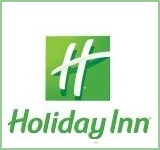
 Click on the buttons to open and read each of VilNews' 18 sub-sections
Click on the buttons to open and read each of VilNews' 18 sub-sections 









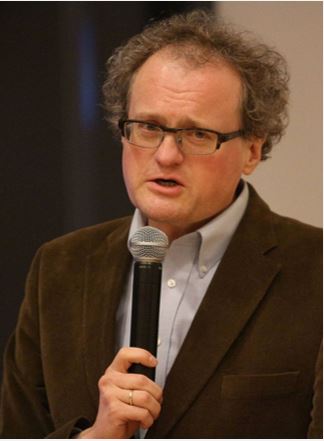
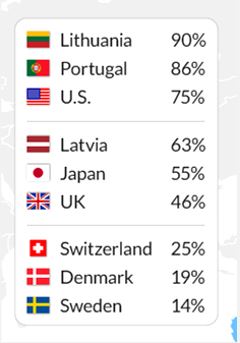
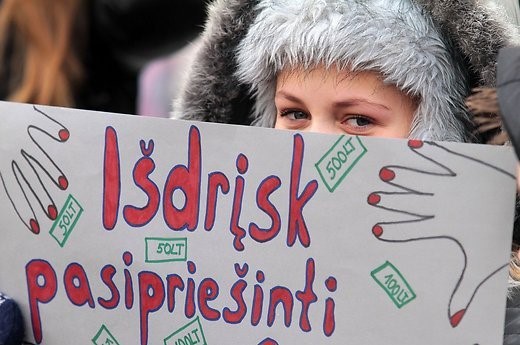


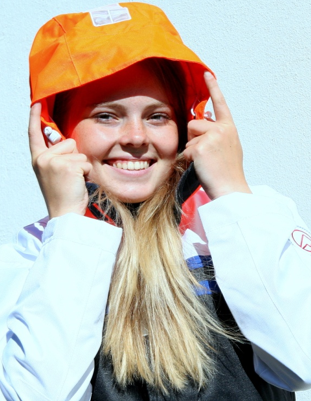
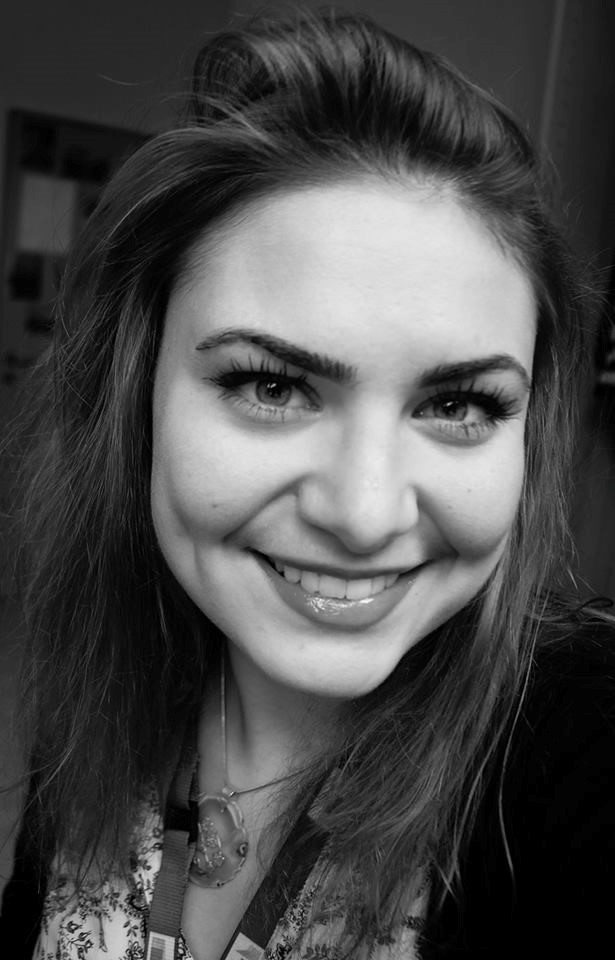
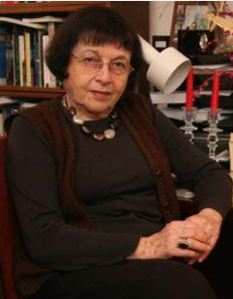
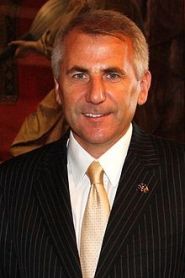
.jpg)
